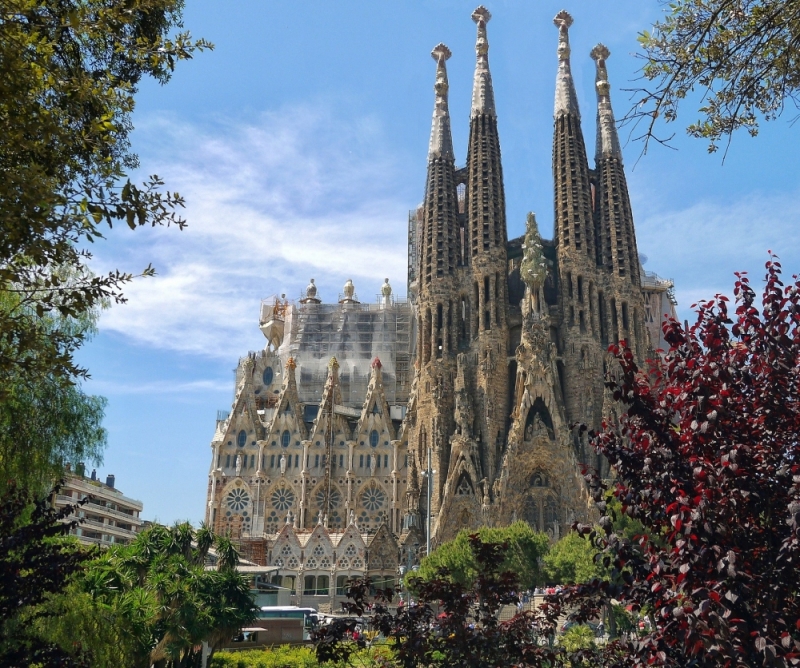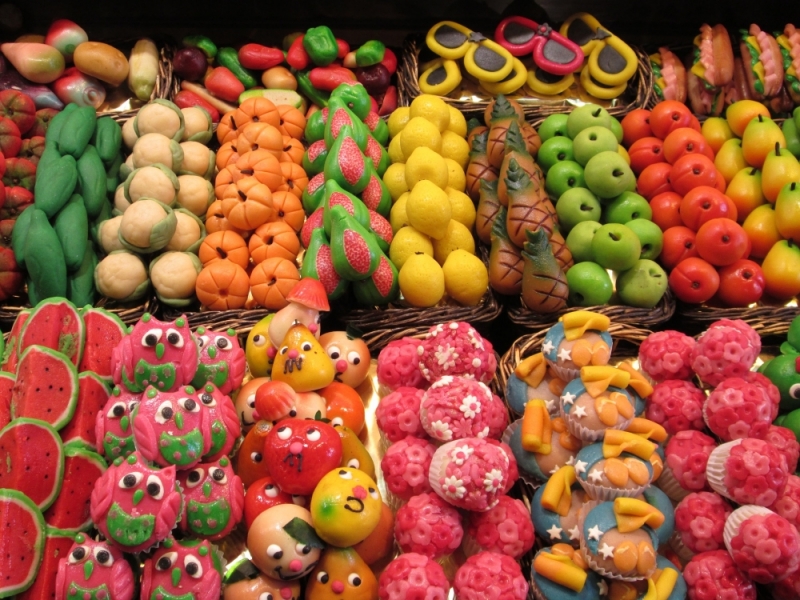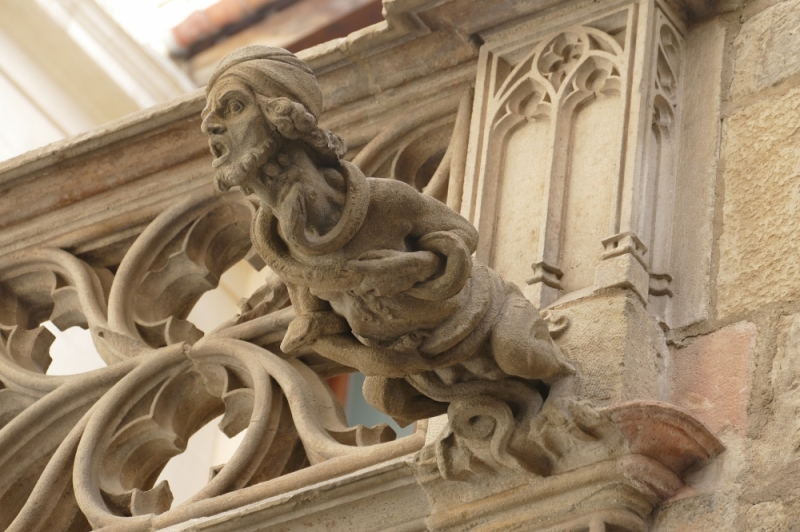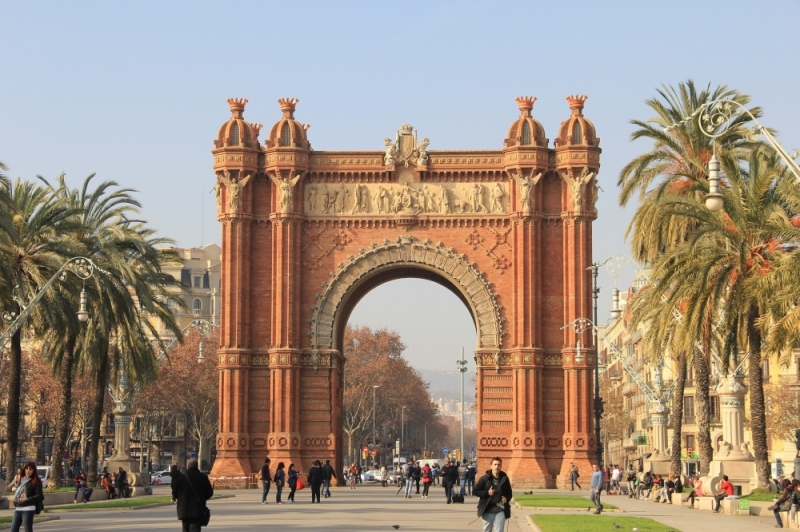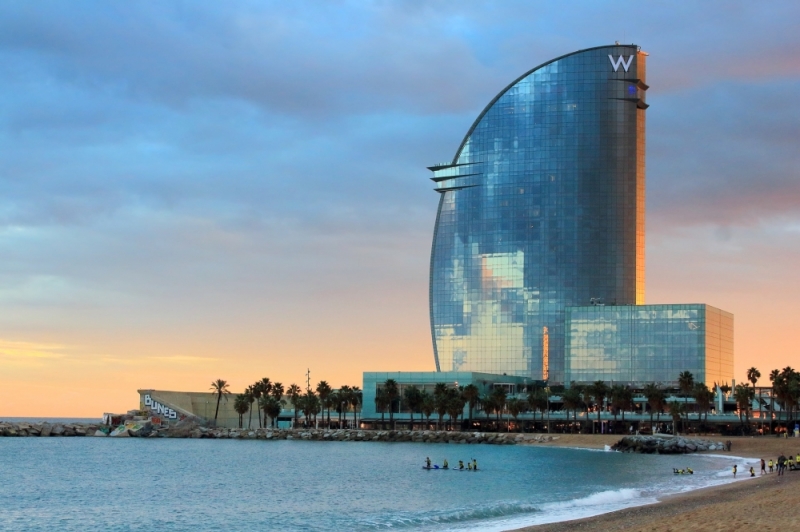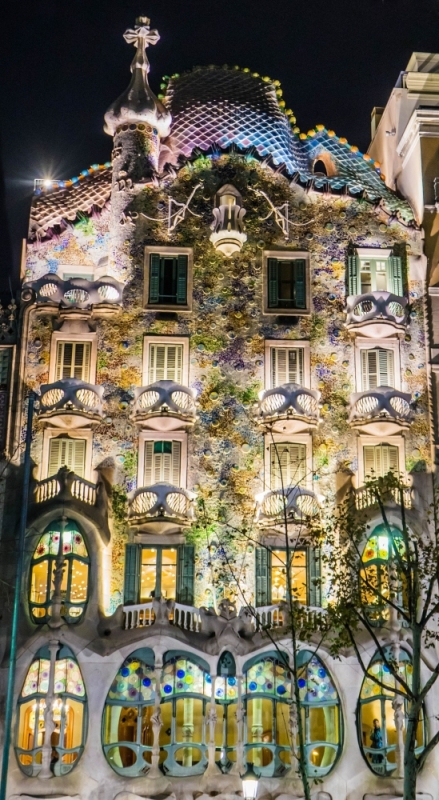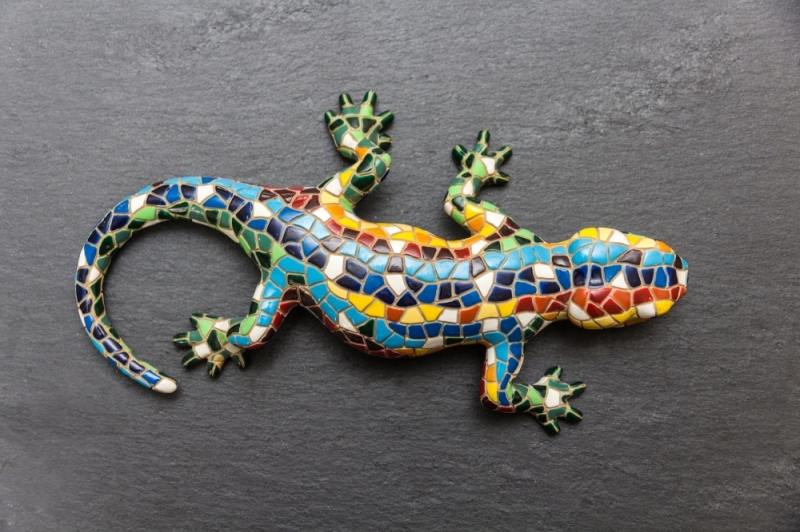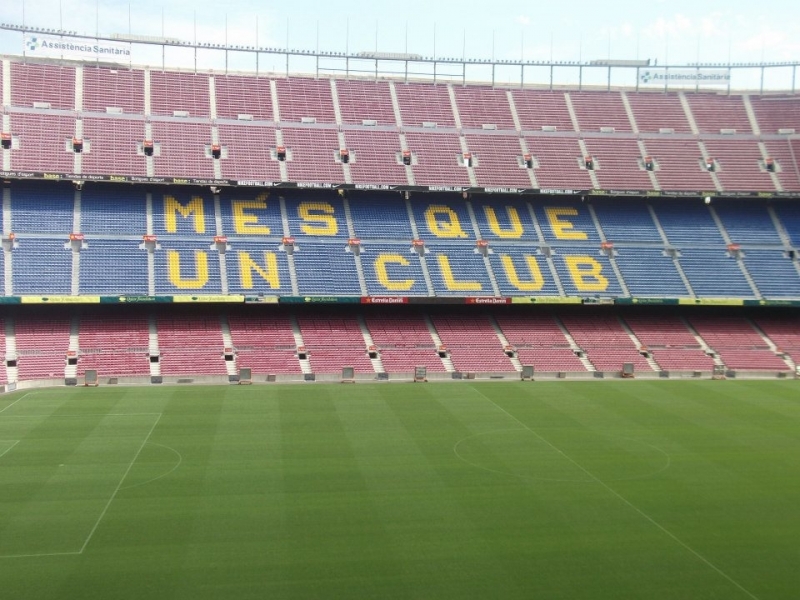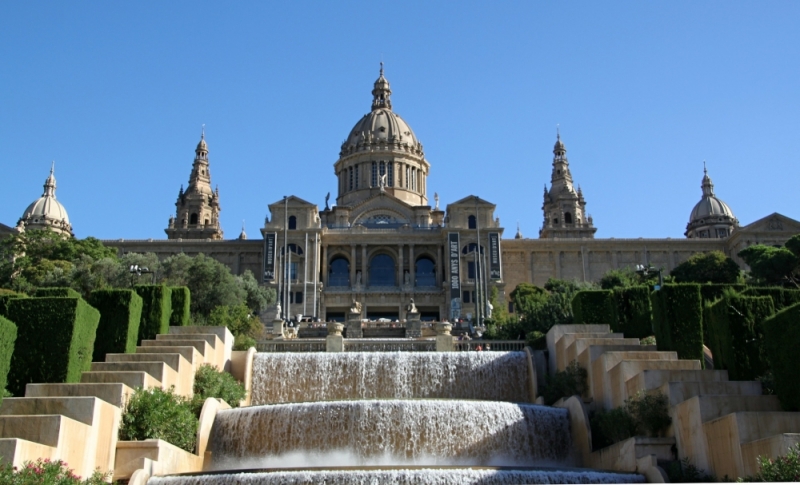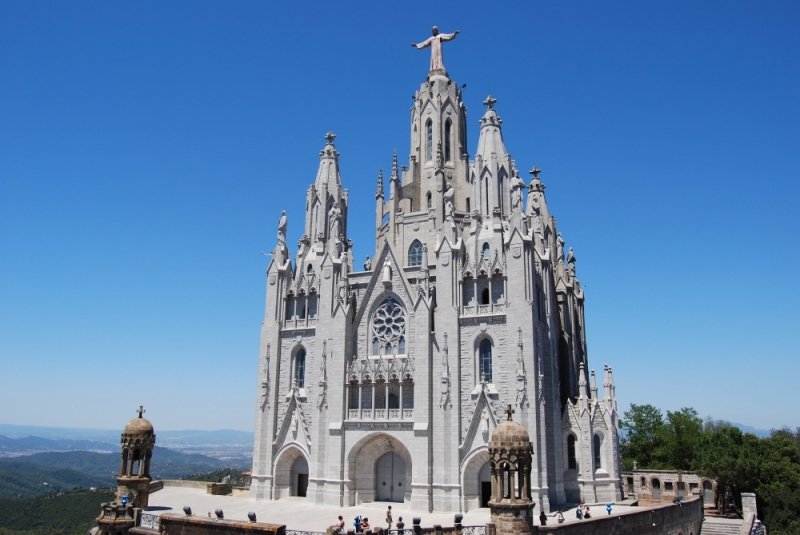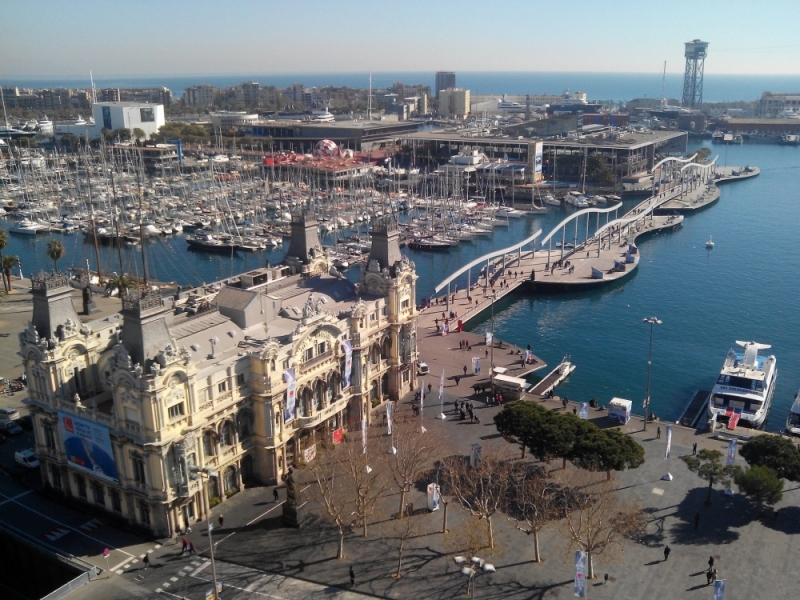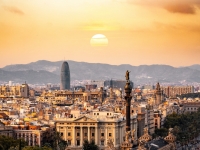Barcelona and its origins
Barcelona, according to legend, was founded by the Carthaginian Hamilcar Barca, but in reality the first settlements of the original Barcino belong to people of Iberian origin. Conquered first by the Romans and then by the Visigoths, Barcelona began its rise in the 10th century, becoming, during the reign of Aragon, one of the main ports of the Mediterranean Sea. However, when Isabella of Castile marries Ferdinand of Aragon, the two kingdoms unite and Barcelona is greatly affected also because following the discovery of America by Christopher Columbus, financed by Isabella of Castile, Barcelona loses its importance as a port in the Mediterranean. In the nineteenth century, with the industrialization process, Barcelona once again regained great importance, so much so that it also hosted two Universal Exhibitions, that of 1888 and 1929. During the Spanish Civil War fought between 1936 and 1939, Barcelona took sides favor of the Republic, which caused numerous bombings by the German Condors, who supported General Franco, who would later become Dictator. During Franco's long dictatorship, Barcelona lost its autonomy and the use of the Catalan language was banned. Furthermore, the impact of the Catalan language was also reduced following the many immigrants who moved from southern Spain to Catalonia. Only after Franco's death and the fall of the Franco regime in 1975, Barcelona managed to regain its identity and establish itself as a modern metropolis. The awarding of the 1992 Olympic Games also contributed to this, allowing the Catalan capital to renew itself, expand and promote its image in the world, making it a very important tourist destination.
What see
Before leaving for Barcelona and deciding what to see, the totality of the sites will certainly show you, in the first place, the Sagrada Familia of Antoni Gaudí . The Sagrada Familia is certainly the most visited monument in Spain, the one that identifies Barcelona and Spain in the rest of the world. This marvelous basilica, consecrated in 2004 by Pope Benedict XVI, is one of the most important monuments of the architect Antoni Gaudì which, however, following the death of the artist, remained incomplete. To date it is estimated that the basilica may be finished by 2026, but this is only a hypothesis because the work to complete it is financed by donations. Gaudi worked on this work until 1926, the year in which he died suddenly and was able to see only one of the three facades, the Nativity of Jesus, complete. the other two facades were to be dedicated to the Crucifixion and Resurrection of Christ. The façade of the Crucifixion remained unfinished until 2002, while that of the Resurrection, still unfinished, will be the facade of the main entrance, on whose bronze door is written the Our Father in Catalan. The Sagrada Familia is the emblem of Symbolism. Each element that composes it has a symbolic meaning: looking at the final project, we see that the Sagrada Familia will have 18 towers. Of these, 12 towers represent the Apostles, while the 4 largest towers represent the 4 Evangelists. Finally, there will be the last 2 towers that will represent Mary and Jesus. The interior of the basilica is even more impressive than the outside, if possible. The main columns resemble trees, while the ceiling appears to be composed of sunflowers. But what makes this place even more magical are the windows that with their play of colors and light, make the interior of the basilica a place where one breathes peace and tranquility. In the crypt, which is the oldest part of the basilica, is the tomb of Gaudì, which can only be visited during Eucharistic celebrations.
La Rambla
La Rambla is the main street in Barcelona, the avenue leading from Plaza de Catalunya to the Statue of Columbus on Port Vell , animated all year round by street artists, bars, restaurants and souvenir and flower stalls. At night, however, it becomes a red-light avenue where you must also pay attention to pickpockets. In reality the Rambla is not one but can be divided into 5 different rambla that are commonly called Las Rambals. On the upper part of the Rambla, starting from Plaza de Catalunya, there is the Canalets , a small bronze and black fountain that seems to ensure that anyone in Barcelona drinks its water in Barcelona. Continuing for about 600 meters, on your right you will find the colorful market of La Boqueria , the largest food market in Spain, rich in colors, smells and aromas of fruit, Spanish hams, Catalan sausages and much more, up to the colorful stalls of candies that will surely tempt you. Continuing your walk along the Rambla, some side streets will take you to Plaça Reial , one of the most beautiful and lively squares in Barcelona. On the opposite side, instead, you will find Palau Güell , a palace designed by the architect Gaudì. Continuing towards the end of the Rambla you will find the Gran Teatre del Liceu , the still active theater, older than Barcelona where many famous artists performed, such as the soprano Montserrat Caballé. Arriving at the end of the Rambla and passing the Columbus monument, you will find yourself on a sixth rambla, better known as Rambla de Mar, where the very famous Maremagnum shopping center is located and, in the vicinity, there is also the Aquarium of Barcelona, which although not as famous as the Oceanographic of Valencia, is still very nice to visit, as the path to his internship will allow you to enter an amazing underwater tunnel that crosses a transparent tank in which sharks, mantas and many other fish swim.
Gothic Barrio
If you are on the Rambla, coming from Plaza de Catalunya, on your left you will see that there are alleys, the carrers, which will lead you to the old part of Barcelona, passing through Plaza Nova , you will enter the famous Barrio Gotico . The district owes its name to the many Gothic buildings that crowd it. Here there is no path to follow, you will only have to lose yourself in the alleys. Plaça del Rei is the main square of the neighborhood and is surrounded by the Palau Reial Major which was the residence of the Aragonese kings. In this part of the city there are so many buildings of medieval origin that are still used as palaces of power, such as the Palau de la Generalitat de Catalunya and the Casa de la Ciutat , which would be the municipality of Barcelona. In this part of the city there are also many churches, such as the basilica of Santa Maria del Pi , which owes its name to the pine tree in front of the main entrance to the basilica. A special mention deserves the beautiful Cathedral of the Holy Cross and Saint Eulalia, the greatest example of Gothic art in all of Catalonia, dedicated to Saint Eulalia, patron saint of Barcelona, but also to the Holy Cross, which according to legend, seems to be state of exponential importance during the battles against the Turks, held in Lepanto. The interior of the cathedral has three naves and on the bottom there is the altar with the Christ of Lepanto. Looking towards the upper part of the cathedral, you will certainly notice the particular Gothic windows, among which the famous stained glass window by Gil Fontanet, dating back to the Renaissance, stands out. The exterior is instead characterized by a beautiful cloister dating back to the 15th century where there is a beautiful garden of magnolias and in the center, the Fountain of the geese, with 13 geese that recall the age that Saint Eulalia had when she was martyred. Another very beautiful building, which will surely leave you speechless, is the Palau de la Musica Catalana , a beautiful building symbol of Catalan modernism, which has also been declared a national monument, as well as a UNESCO heritage site. The mosaics of the columns, the balcony and the windows give the Palau such harmony that it makes it appear, in the eyes of the beholder, a marvelous garden of music (as the people of Barcelona call it). The Palau can be visited, with an Italian guide, by booking tickets online, which we advise you to do because availability is limited.
The shore
Remaining inside the Ciutat Vella (the old city) of Barcelona, move from the Barrio Gotico to the La Ribera district, the neighborhood where there is another beautiful market in Barcelona, the Born Market , used today as a cultural center. The Born is near the emblematic Basilica of Santa Maria del Mar , a large Gothic church dating back to the 14th century. The basilica was built in just 55 years because, being in the port area of the city, the sailors and fishermen took care of transporting the stones for the construction of the church, from the Montjuic quarry. For this and its position, Santa Maria del Mar is considered the church of the sailors. Staying in the La Ribera area, you can visit the Picasso museum , where there are about 4,000 early works by the artist, who also lived in Barcelona from adolescence. There are also works of the famous blue period, but those of his most famous period, the Cubist period, which gave him world fame, are missing. The museum, very large, is located in 5 buildings of which 3 are used for the permanent exhibition on Picasso and two others are used for temporary exhibitions. Before leaving this part of the Ciutat Vella, we advise you to take a walk in the Parc de la Ciutadella , the park reminiscent of the Jardins du Luxembourg in Paris. The entrance to the park is recognizable because it is the arc de Triomf , the Mudejar style arch, designed to be the entrance to the 1888 Expo. Inside the park there is also the Barcelona Zoo , a large zoo that houses over 400 different species, famous for having hosted the albino Gorilla, Snowflake.
The suburb
La Ciudad Vella also includes another district, El Raval , which extends to the area west of the Rambla, which can be accessed through the alleys on your right (along the Rambla from Plaza de Catalunya). Once you enter these alleys, you will immediately recognize El Raval, thanks to the many ethnic shops that are located in the streets. El Raval was considered an infamous neighborhood because, frequented by immigrants, prostitutes and drug dealers from whom one could be pickpocketed and for this reason had been left to decay, until in 1995 it became the seat of the MACBA , the Museum of Contemporary Art of Barcelona. Thanks to this beautiful museum, which houses the works of many famous contemporary artists, the neighborhood has been re-evaluated, becoming the seat of important art galleries and cultural centers, such as the CCCB , the Contemporary Cultural Center of Barcelona or the Maritime Museum . This part of the city is very beautiful to visit as you will find yourself discovering a part of Barcelona where old and new coexist, art galleries and old bars, ethnic shops and large boutiques. In short, here you will discover a face of Barcelona that is absolutely not visible in other parts of the city. In the Raval there are also important historic buildings, such as the Antic Hospital de la Santa Creu , a beautiful Gothic building that is now the site of the Catalunya Library and which also houses art galleries and recreational spaces. Finally, we recommend arriving at the monastery of Sant Pau del Camp , an ancient Benedictine monastery, dating back to the 10th century, which hides, in its interior, a marvelous cloister in Romanesque style with Arab influences, which make it unique in the world.
The Barceloneta
If in Barcelona you decide to go there in the summer, then, given the high temperatures of the Catalan capital, why not take a trip to the beach? La Barceloneta is the maritime district of the city, the one that was once inhabited by sailors and fishermen and that is bordered by a beautiful beach that during the hot summer days, but also in the spring, is full of people: those lying in the sun to relax , instead those who prefer a beach volleyball game or cool off with a dip in the water. But you will also meet sellers of beer, coconut, donuts, mojitos ... and the more you have, the more you put it. If you prefer to walk among the narrow streets of the neighborhood, know that you will be kidnapped by the colors of the buildings, by the old people who, sitting in the bars of the neighborhood, will advise you to stop for a cold beer and have a chat. For fans of the genre, the Playa de la Barceloneta is bordered by Passeig Maritim , a long avenue with a cycle path where it is also possible to ride rollerblades. If you prefer to spend the evening here, know that there are plenty of bars, restaurants and nightclubs to choose from, whether you are with your family, as a couple or even with friends.
Passeig De Gràcia - Casa Milà and Casa Battló
So far we have talked about everything beyond La Rambla, going towards the port, but if instead you decide to go beyond the Rambla and go beyond Plaza de Catalunya, you will find yourself on Passeig de Gràcia, one of the most important boulevards in Barcelona, like the Champs-Elysées in Paris. Passeig de Gràcia is one of the most expensive streets in all of Spain, also because here there are the boutiques of the most important world brands, such as Prada, Chanel, Gucci, Dolce & Gabbana and many others. But to live in Passeig de Gràcia is not cheap either; just think that in this avingude (avenue), there are the most important residences, built by famous Modernist architects like Domenech i Montaner, Josep Cuig i Cadafalch, but above all Antoni Gaudí. In fact, walking along the Passeig, at number 43, you will find the famous Casa Battló, designed by Gaudí, at the request of the wealthy Battló family, who wanted to surpass in beauty, another important building, the famous Casa Amatller. The building is spread over 4 floors, of which, the first floor was intended for the Battló family, while the other floors were intended for apartments to be rented. Today Casa Battló can be visited and since 2005 it has become Unesco Heritage. During the Christmas period, Casa Battló can be visited even in the evening; by visiting the official website you will find the dates and times for the visit. Continuing on your walk, on Passeig De Gràcia, 92 you will find Casa Milà, better known as La Pedrera. This house, commissioned to Gaudí by the industrialist Pere Milà, owes its nickname to the fact that its appearance reminds of a "petraia" (pedrera in Spanish), with its curved lines, the natural color of its construction make one think of the construction site of a building being defined.
If you want to continue your walk discovering other works that Gaudì has spread around Barcelona, then we recommend going to Park Güell.
Park Güell
Park Güell is a beautiful city park designed by Antoni Gaudí, at the request of the Spanish entrepreneur and politician, Eusebi Güell, located on the upper part of Barcelona, on the slope of the Colina del Carmel. The park is located in an uphill area and the entrance is recognizable by the iron gate and the two houses on the sides of the gate. One of the two buildings can be visited, while the other has become a small shop selling souvenirs. Once you cross the threshold, you will find yourself in front of a double ramp staircase surmounted by a beautiful ceramic salamander , with mosaic decoration, which welcomes visitors. Once up the staircase you reach the Hipostila room, also known as the Doric Temple, there are 88 Doric columns supporting the terrace above. Going up to the terrace, you will have a spectacular view of the city. Furthermore, you will find a snake-shaped bench on which you will surely sit to take a souvenir photo with the beautiful view of Barcelona behind you. Looking to the right, then, you will see spiers, which belong to the Gaudí house-museum . Yes, because inside Parc Güell there is also what was the home of Gaudì for about 20 years, until the moment when it did not move into the laboratory inside the Sagrada Familia. Today the house is a museum in which objects and furniture belonging to the Catalan artist are collected.
Royal Palace of Pedralbes and Camp Nou
After you have taken a beautiful tour of the center of Barcelona and seen its main attractions, we advise you to take the metro and get off at Palau Reial. Arrived here you will have two alternatives: the first is to visit the Royal Palace of Pedralbes, which is an ancient residence of the Spanish royal family, who stopped here during his visits to Catalonia. Today the palace also houses the Barcelona Design Museum, in fact inside it is possible to find ceramics and ancient fabrics. Also, in one of its rooms, exactly the Tinell room, which Ferdinand of Aragon and Isabella of Castile welcomed Christopher Columbus, returning from the Americas. If, on the other hand, you love sport, especially football, then the second alternative we propose is to get off at the Palau Reial stop, continue for about 600 meters on foot and find yourself in front of a football temple, the Camp Nou. The Camp Nou is the stadium owned by the Futbol Club Barcelona and is the first stadium in Europe for capacity. The Camp Nou as well as being a sports facility is also a museum. In fact, by purchasing tickets for the "Camp Nou Experience" you can visit the entire facility, starting from the museum where the jerseys and trophies of the greatest players who played on the team are displayed, up to the current star, Lionel Messi , of which there are also exposed gold balloons. Furthermore, you can pass through the stands, but also in the blaugrana club locker rooms, on the pitch and even in the press room where post-match conferences are held. Finally, you can buy a shirt or a souvenir from the adjacent store team.
Plaza D'Espanya e Montjuic
Another beautiful square, designed for the 1929 Expo is Plaça D'Espanya, recognizable by the two Venetian towers that stand out on one side of the square. At the center is the Font Magica , a fountain dedicated to water, composed of sculptures that represent the seas and rivers that bathe Spain. In the evening the Magic Font becomes a "magical" attraction as it lights up with lights and water games. By consulting the official website, you will know which are the times and the days when the fontanta "performs" in its shows of water games, lights and music. The Fountain is located at the foot of Montjuic , a promontory on the top of which, behind the fountain, is the National Museum of Catalan Art . Climbing the stairs to the museum, you will find yourself discovering this very characteristic area of Barcelona. In Montjuic the Olympic Citadel was built where the 1992 Olympics took place. Here we find, in fact, Palau Sant Jordi which is a sports arena; then there is the Olympic Stadium , where the games and athletic competitions were held during the Olympics. Today the stadium has become Espanyol stadium, the second team of Barcelona. Here we also find the Montjuic castle , which until 2009 housed the military museum and then there is the monumental cemetery of Montjuic, famous because it presents an eclectic style, which turned to modernism.
Movida and entertainment
Barcelona is undoubtedly the Spanish city, most famous for its nightlife and if movida means "walking the streets", surely in Barcelona you will be spoiled for choice, in fact, on the Rambla, in the evening there is still much more movement , compared to the day. Bars, cafes, restaurants, tapas bars, stalls, street artists and, if you want to dance, you will also find lots of pr that will sell you tickets to the most famous discos in the city. Yes, because in Barcelona there are so many nightclubs including, the most famous is the RAZZMATAZZ , a nightclub, which is located in a large post-industrial space, opened in 2000 and which has since become the symbolic disco of the city. 5 rooms spread over three floors and in each room there is a different musical genre, from the house to the discomusic, up to the raggaeton and Latin American. Another big disco that contends the scepter of fame to RAZZMATAZZ, is certainly the APOLO. Despite being more like a theater, the APOLO has always been a ballroom since 1943, the year of its opening. The APOLO has two rooms and offers different evenings every evening, playing many different musical genres. If, on the other hand, you are not a fan of discos, but just want to have a drink while listening to some lounge music, then we recommend the Barceloneta. There, the waterfront, comes alive every night with lots of cafes that will allow you to have a drink while sitting and watching the waterfront. If you are looking for exclusive places then we recommend the ECLIPSE BAR , the bar located on the 26th floor of the W hotel (the sail-shaped hotel near the beach), from which you can admire a beautiful panorama. Another very special bar is the ICEBAR , located on the beach of Somorrostro (Barceloneta area), near the Casino. Paying € 16.50 you can enter this bar carved in ice, where included in the price you will also have a snow jacket, gloves and a drink that will be served to you in a glass of ice.
Inside the bar you will find ice sculptures made by the most important ice artists, worldwide. Absolutely not to be missed.
If you want to try a delicious Catalan Paella, you can try it in the many restaurants along the Port Vell or on the Barceloneta or you can prepare it yourself at The Paella Club , a restaurant where Paella Masterclasses are held. During the course, the chefs will make you prepare different variations of paella (classic, fish, chicken, pork, vegan, etc.) and will also reveal the secrets of the typical Spanish dish. During the course you will also be served tinto wine (red wine) and appetizers and, once the paella is ready, you can eat it dividing yours with that made by other diners. If, on the other hand, you are not tired of touring museums and places of cultural interest, then you could visit another very special museum, the Hemp Museum Gallery, a museum completely dedicated to cannabis, better known as marihuana. In the museum, which is located in the Barrio Gotico, there are about 8000 objects that relate to the cultivation, consumption and rituals of modern medicine that involve the use of cannabis. Another very special place is the REFUGI 307 , an air raid shelter used during the Spanish Civil War, which housed about 2000 people, every time there was something to save for the continuous aerial bombardment of Barcelona. Inside the refuge, you can visit the kitchens, bathrooms but also the various tunnels that people used to get to the shelter. Currently, visits are by appointment, therefore, we advise you to contact Refugi 307 via its official website. In Barcelona, in the evening, there is a free show that I would call wonderful. We had already talked about it describing Plaza d'Espanya, but the Fuente Magica de Montjuic games deserve more than a mention. These are beautiful water games, lights and music that during some days of the week and every weekend, with shows that last 30 minutes and are repeated every 40 minutes, will keep you there, with your nose in the air to look like water can create magical effects. Remember to consult the official site of the Fuente because at certain times of the year, the shows are performed only for a few days. If you have time, you can also spend a day at Tibidabo, the hill outside Barcelona, which can be reached by funicular. At the top, you can decide to go to the homonymous funfair, or admire the view of the city from the beautiful church of the Sacred Heart.
Climate, curiosity and advice
Climate: Barcelona has a Mediterranean climate, with hot summers and mild winters. It can be visited throughout the year as it is difficult to do very cold in winter, indeed, it may happen that summer will be quite hot, but this can be solved, as you can always go to the beach. Even the rains are not abundant, as the disturbances coming from the Atlantic Ocean, arrive already "discharged", having had to cross Portugal and all of Spain, before arriving on the Catalan city. The snow is quite rare, but it is not impossible that on the heights around the city there is not some small snowfall, even if the last one dates back to March 2010. Finally, autumn and spring could be defined the most rainy seasons even if sunny days prevail, especially in May. So if you prefer to visit Barcelona with a not too high temperature, the best period is between late April and early June and September. Those who would like to take a swim in the sea, we recommend July and August, because even if it is hot it is in these months that the sea water temperature reaches the most pleasant degrees.
Curiosity: Do you know that in Barcelona there is the largest computer in the world? It is located at the Barcelona Super Computing Center, a computational center that opened its doors in 1991. It seems that even the same Super Computing Center is building another computer to overcome the guinness of the previous one.
Tips: If you are planning to take a trip to Barcelona, we recommend you pay close attention when booking the hotel where to stay, as in Barcelona, many are hostels where you will have to share the bathroom with other people. So be very careful when booking. In addition, you could also opt for a different solution: the HOUSE BOAT, the houseboats in the port of Barcelona that act as real hotels.
Curiosity: Do you know that in Barcelona there is the largest computer in the world? It is located at the Barcelona Super Computing Center, a computational center that opened its doors in 1991. It seems that even the same Super Computing Center is building another computer to overcome the guinness of the previous one.
Tips: If you are planning to take a trip to Barcelona, we recommend you pay close attention when booking the hotel where to stay, as in Barcelona, many are hostels where you will have to share the bathroom with other people. So be very careful when booking. In addition, you could also opt for a different solution: the HOUSE BOAT, the houseboats in the port of Barcelona that act as real hotels.


